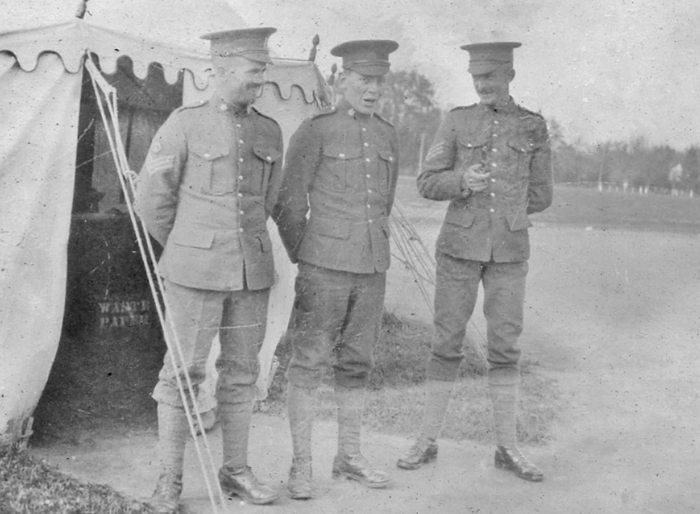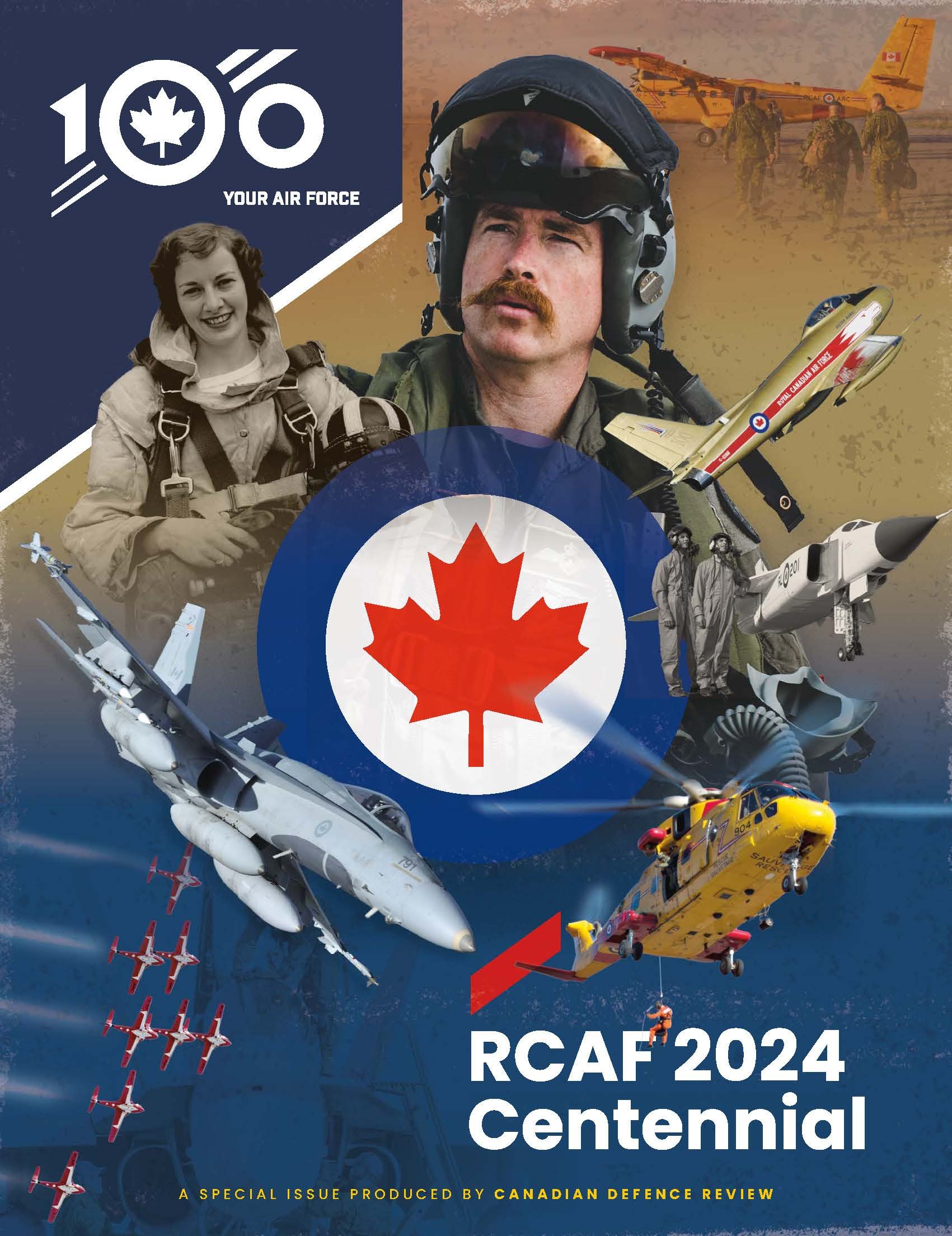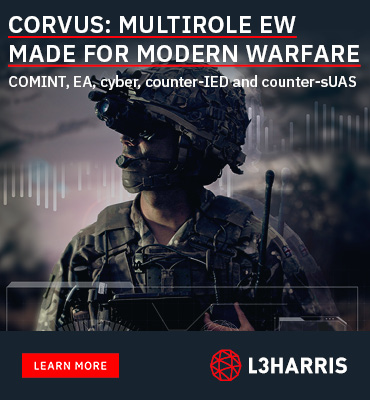Canadian soldier of the First World War identified
Image: CSM McVean is on the left. Credit: Toronto Scottish Regiment Archives
The Department of National Defence and the Canadian Armed Forces (CAF) have confirmed that the grave of a previously unknown First World War soldier in Courcelette British Cemetery in Courcelette, the Somme, France, is that of Company Sergeant-Major Alexander McVean. The identity was confirmed through historical and archival research.
Alexander McVean was born on March 28, 1889, in Shettleston, Lanarkshire, Scotland, to Malcolm and Mary McVean (née Cameron). One of nine children, he served in The Queen’s Own Royal Glasgow Yeomanry, a regiment of the British Army Reserve, before emigrating to Canada in 1911. Prior to enlisting in Toronto with the Canadian Expeditionary Force (CEF), he served in the 9th Mississauga Horse, a regiment of the Active Militia, and worked as a civilian chauffeur and electric motorman, or streetcar operator. In 1915, he enlisted for overseas service with the 75th Infantry Battalion, CEF, and sailed for England. Following training, his unit proceeded to France in August 1916. Likely because of his previous military experience, he was promoted to the rank of Company Sergeant-Major in October.
The 75th Battalion fought as part of the 11th Infantry Brigade of the 4th Canadian Division, and in October 1916 was tasked with capturing the important objectives of the Regina and Desire Trenches, the last of a series of trenches located between Thiepval and Courcelette, France. This action, referred to as the Battle of the Ancre, ended on November 18, 1916, marking the conclusion of the five months of the larger Battle of the Somme. On that day of fierce fighting, the 4th Canadian Division took many German prisoners, including 17 officers and 608 from other ranks, but suffered 1,250 casualties of their own. Of the 248 casualties from the 75th Battalion, 104 men died, 71 of whom have no known grave, including CSM McVean, who was reported wounded, then later declared killed in action, at the age of 27.
The Canadian Armed Forces has notified the family of CSM McVean’s identification and is providing them with ongoing support. A headstone rededication ceremony will take place at the earliest opportunity at the CWGC’s Courcelette British Cemetery in Courcelette, the Somme, France.
Quotes
“Whether today or more than a century ago, we honour the courage of all who have served our nation. The successful identification of Company Sergeant-Major McVean’s final resting place is a reminder of the enormity of the sacrifice that some have made in service to Canada. To his family: I assure you that your loved one will always be honoured and remembered.”
The Honourable Bill Blair, Minister of National Defence
“Time doesn’t diminish the price so many young Canadian soldiers, like Company Sergeant-Major Alexander McVean, paid for the freedoms we enjoy today. We will continue to honour those who served Canada and recognize those who made the ultimate sacrifice. Lest we forget.”
The Honourable Ginette Petitpas Taylor, Minister of Veterans Affairs and Associate Minister of National Defence
Quick Facts
• CSM McVean is commemorated on the Canadian National Vimy Memorial, erected in memory of Canadian soldiers killed in France during the First World War who have no known grave.
• Alexander’s brother, Bombardier Malcolm McVean, also died in the war, while serving with the British Royal Field Artillery, and is buried in Étaples Military Cemetery near Boulogne, France.
• In May 2019, the Directorate of History and Heritage (DHH) received a report from the Commonwealth War Graves Commission (CWGC) detailing the potential identification of Plot 8, Row C, Grave 4 in Courcelette British Cemetery, in Courcelette, the Somme, France. Independent researchers had raised the possibility that this grave was that of CSM McVean.
• Extensive research undertaken by both CWGC and DHH concluded that this grave could only be that of CSM McVean; no other candidate matched the details of the partial identification. In October 2021, the Casualty Identification Program’s Casualty Identification Review Board, which includes members from DHH and CWGC and representatives from the Canadian Forces Forensic Odontology Response Team and the Canadian Museum of History, confirmed the identification.
• The Commonwealth War Graves Commission commemorates the 1.7 million Commonwealth servicemen and women who died during the two world wars. Using an extensive archive, the Commission works with their partners to recover, investigate and identify those with no known grave to give them the dignity of burial and the commemoration they deserve.







